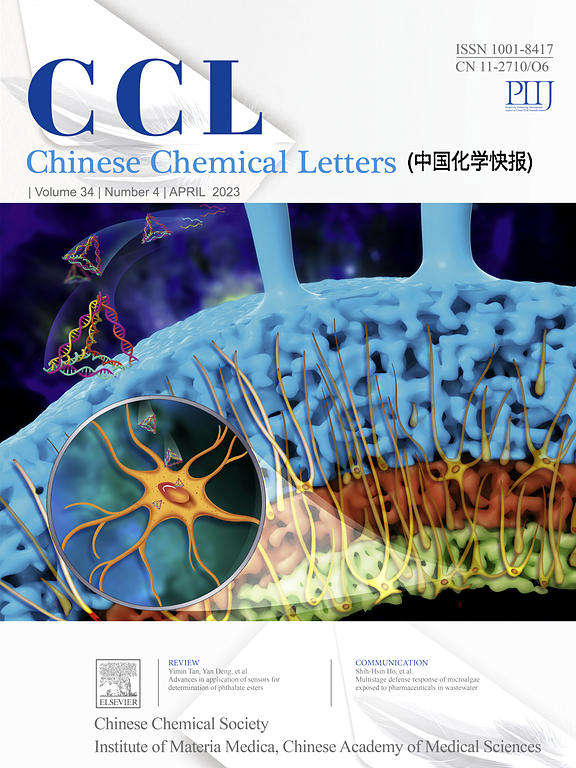Tailoring active sites of cerium and nitrogen Co-doped rhenium disulfide for enhanced hydrogen evolution reaction
IF 8.9
1区 化学
Q1 CHEMISTRY, MULTIDISCIPLINARY
引用次数: 0
Abstract
The construction of electrocatalysts with exceptional intrinsic activity and rich active sites has proven to be an effective strategy for remarkably enhancing the activity of the hydrogen evolution reaction (HER). Here, self-supporting cerium (Ce) and nitrogen (N)-doped rhenium disulfide nanosheets (denoted Ce,N-ReS2) grown on carbon fiber paper have been successfully synthesized. Ce and N doping modulates the lattice irregularity and adjusts the electronic configuration of rhenium disulfide, resulting in reduced hydrogen adsorption/desorption energy and enhanced catalytic stability. The optimized Ce,N-ReS2 electrocatalysts exhibit superior catalytic activities of 44/130 and 79/139 mV at 10/100 mA/cm2 for HER in alkaline and acidic media, respectively, along with robust durability. Both experimental results and density functional theory calculations indicate that the electronic structure of ReS2 can be significantly altered by strategically incorporating Ce and N into the lattice, which in turn optimizes the Gibbs free energy of HER intermediates and accelerates the electrochemical kinetics. This study provides a potentially effective approach for the design and optimization of innovative electrocatalysts involving the regulation of anion and cation dual-doping and architectural engineering.

铈和氮共掺杂二硫化铼的活性位点裁剪增强析氢反应
构建具有优异内在活性和丰富活性位点的电催化剂已被证明是显著提高析氢反应活性的有效策略。本文成功地在碳纤维纸上合成了自支撑铈(Ce)和氮(N)掺杂的二硫化铼纳米片(Ce,N- res2)。Ce和N的掺杂调节了二硫化铼的晶格不规则性,调整了二硫化铼的电子构型,从而降低了氢的吸附/解吸能,提高了催化稳定性。优化后的Ce,N-ReS2电催化剂在碱性和酸性介质中对HER的催化活性分别为44/130和79/139 mV(10/100 mA/cm2),并且具有良好的耐久性。实验结果和密度功能理论计算均表明,将Ce和N策略性地加入到ReS2晶格中可以显著改变ReS2的电子结构,从而优化HER中间体的吉布斯自由能,加速电化学动力学。该研究为涉及阴离子和阳离子双掺杂调控和建筑工程的新型电催化剂的设计和优化提供了潜在的有效途径。
本文章由计算机程序翻译,如有差异,请以英文原文为准。
求助全文
约1分钟内获得全文
求助全文
来源期刊

Chinese Chemical Letters
化学-化学综合
CiteScore
14.10
自引率
15.40%
发文量
8969
审稿时长
1.6 months
期刊介绍:
Chinese Chemical Letters (CCL) (ISSN 1001-8417) was founded in July 1990. The journal publishes preliminary accounts in the whole field of chemistry, including inorganic chemistry, organic chemistry, analytical chemistry, physical chemistry, polymer chemistry, applied chemistry, etc.Chinese Chemical Letters does not accept articles previously published or scheduled to be published. To verify originality, your article may be checked by the originality detection service CrossCheck.
 求助内容:
求助内容: 应助结果提醒方式:
应助结果提醒方式:


